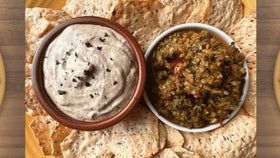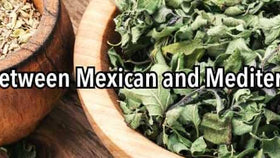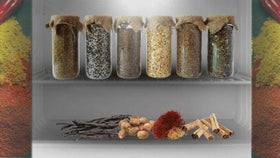Is Morchella a Truffle?
In the world of high-end culinary fungi, a couple of ingredients tend to garner the most attention. These two are Morchella and truffles. Because of the rarity, seasonality, and high price tags, a common question tends to arise among edible fungus novices—is Morchella a truffle.
In short, Morchella is not a truffle. It is more commonly known as a morel mushroom and, while both are varieties of fungi, they are two very different species. Let’s take a look at the distinctive features, origins, and uses of both morels and truffles.
The Differences Between Morchella and Truffle?
What is a Morchella?
Morchellas are an edible mushrooms with a hollow body, a cap reminiscent of honeycomb or a brain structure, a white or cream-colored stem, and a cap that appears to hang over but is actually attached to the stem. As is true with many types of mushrooms, they have a symbiotic relationship with trees. Like truffles, there are several different types of morels, which vary in color, size, habitat, host-tree variety, and preferred growth conditions. They are prized for their earthy, nutty flavor, their durability, and a somewhat meaty texture.
What is a Truffle?
Truffles belong to the Tuber genus and are a mushroom that, unlike most other known varieties of edible mushrooms, fruit underground. Much like morels, there are several different types of truffles, all of which have symbiotic relationship with trees, though the tree species may differ. Appearance-wise, truffles will vary in color and textural components. All are renowned for their pungent aroma and rich, umami flavor, though some are more subtle, with prominent defined notes that set them apart.
Flavor Profiles of Morchellas vs Truffles
In terms of taste, both morels and truffles are frequently described as earthy and nutty, though when tasting the two side-by-side, one will quickly experience noticeable differences. Morels offer a delicate combination of earthiness and nuttiness, yes, but also hints of wood and are even sometimes described as sweet and smokey.
Truffles, on the other hand, deliver a more intense and complex flavor profile that is replicated by few ingredients. Often described as a culinary indulgence, these tubers, in general offer up a similar earthiness with nutty elements, but are also peppery, musty, and contain more specific woody notes akin to oak and olive.
Culinary Uses for Morels and Truffles
Both Morchella and truffles have secured their places in high-end kitchens for good reason. The ways in which they are prepared are quite different, however. If not cooked thoroughly, morels have been reported to cause illness. As such, Morels are commonly featured in sautés, sauces, and risottos, showcasing their unique texture and flavor. Other popular preparations include battering and frying or stuffing and roasting.
Unlike morels, Truffles do not need to be cooked prior to consumption. In fact, high-heat will corrupt the intensity of their nature flavor and aroma traits. Best practice for fresh truffles is to not cook them at all or doing so very minimally. Either shaving them atop pasta, eggs, or creamy dishes, or stirring them in at the very end of the cooking process










Slofoodgroup
Author